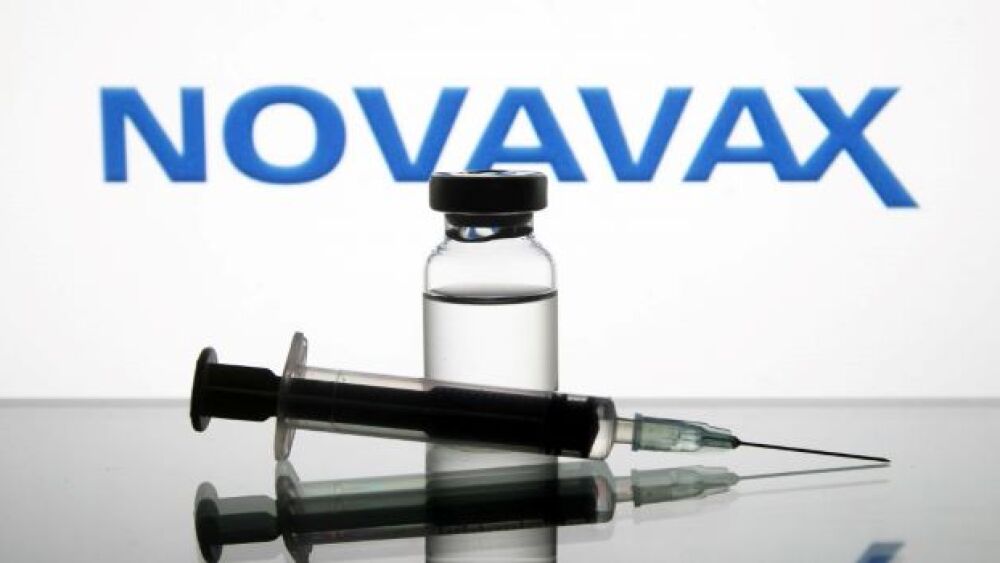FDA Approves Pediatric Indication for Cream and Gel Formulations
GREENSBORO, N.C.--(BUSINESS WIRE)--Merz Dermatology, a division of Merz North America (U.S. affiliate of the global Merz Pharma Group) announced today that Naftin® (naftifine HCl) Gel 2% and Naftin® (naftifine HCl) Cream 2% have received approval for the treatment of interdigital type tinea pedis in pediatric patients aged 12 to 17 years. This pediatric approval expands the previous labelling that indicated Naftin® Gel and Cream 2% for use with patients over 18 years of age.
“athlete’s foot.“ Tinea pedis is the most common chronic fungal infection in the world. It is a skin infection that is usually found between the toes. If left untreated, it can spread to the toenails or other parts of the body.”
“Since the launch of our first Naftin® antifungal product in 1999, Merz has continued to develop new formulations and seek additional indications for the Naftin® line,“ said Bill Humphries, President and CEO of Merz North America. “We are committed to advancing the quality of care in medical dermatology by continuing to provide patients and physicians with new treatment options that address the specific needs of the dermatology space.“
Naftin® is the #1 topical antifungal brand prescribed by dermatologists and podiatrists in the U.S.1 Naftin® (naftifine HCl) is available in both a gel and a cream formulation and is used to treat interdigital (between the toes) type tinea pedis, commonly known as “athlete’s foot.“ Tinea pedis is the most common chronic fungal infection in the world. It is a skin infection that is usually found between the toes. If left untreated, it can spread to the toenails or other parts of the body.
“The approval of Naftin® Gel and Cream 2% for use with pediatric patients represents an important milestone for Merz as we work to expand the treatment options available for patients with the #1 branded topical antifungal in the U.S.1,“ stated Greg Besase, Vice President and Head - U.S. Dermatology for Merz North America. “This new indication demonstrates Merz’s ongoing commitment to improving patient health and our continued leadership in antifungal therapy.”
The approval of Naftin® Gel and Naftin® Cream 2% for use with pediatric patients is based on results from clinical trials involving 4 investigational sites and included 44 patients aged 12 years to 17 years, 11 months. The results indicate that patients treated with Naftin® Gel 2% and Naftin® Cream 2% experienced clinically significant cure rates when compared to placebo.
In addition, Merz was recently granted intellectual property protection for its proprietary gel formulation of Naftin®. The United States Patent and Trademark Office has issued U.S. Patent No. 8,778,365 for Naftin® (naftifine HCl) Gel 2%. This patent is now listed in the U.S. Food and Drug Administration's (FDA) Approved Drug Products with Therapeutic Equivalence Evaluations, or "Orange Book” and provides protection for Naftin® (naftifine HCl) Gel 2% until October 2033.
About Naftin®
Naftin® Cream, 2% is an allyamine antifungal indicated for the treatment of interdigital tinea pedis, tinea cruris, and tinea corporis caused by the organism Trichophyton rubrum in patients 12 years of age and older. Naftin® Gel, 2% is an allylamine antifungal indicated for the treatment of interdigital tinea pedis caused by the organisms Trichophyton rubrum, Trichophyton mentagrophytes, and Epidermophyton floccosum in patients 12 years of age and older. Naftin® (naftifine HCl) Gel 2% and Naftin® (naftifine HCl) Cream 2% are applied topically once a day for 2 weeks. In clinical trials with Naftin Gel 2%, the most common adverse reactions (2%) were application site reactions. In clinical trials with Naftin Cream, 2%, the most common adverse reaction (=1%) was pruritus. If redness or irritation develops with the use of either Naftin Cream, 2% or Naftin Gel, 2%, treatment should be discontinued.
Please see below for the Brief Summary of Full Prescribing Information for Naftin Cream, 2% and Naftin Gel, 2% or view Full Prescribing Information at www.naftin.com.
About Merz Dermatology
Merz Dermatology is a division of Merz North America, a specialty healthcare company that develops and commercializes treatment solutions in aesthetics, dermatology and neurosciences in the U.S. and Canada. By developing products that improve patients’ health and help them to live better, feel better and look better, Merz will continue to make significant contributions to the well-being of individuals around the world. Merz Dermatology is committed to providing high-quality products and outstanding service to physicians in the fields of medical dermatology and podiatry. Merz Dermatology‘s flagship brand, Naftin® (naftifine HCl), remains the #1 topical antifungal brand prescribed by dermatologists and podiatrists in the U.S.1 Merz Dermatology is an important contributor to the U.S. dermatology and podiatry space, offering a well-balanced product portfolio that includes the Naftin® (naftifine HCl) family of products, Onmel™ (itraconazole), Aluvea™ (Urea 39%) Cream and Topicort® 0.05% (Desoximetasone) Cream and Ointment. For more information about Merz Dermatology and their U.S. product portfolio, please visit www.merzusa.com.
IMPORTANT SAFETY INFORMATION for ONMEL™, INCLUDING BOXED WARNING
|
WARNING: CONGESTIVE HEART FAILURE, CARDIAC EFFECTS AND DRUG INTERACTIONS
Do not administer ONMEL™ for the treatment of onychomycosis in patients with evidence of ventricular dysfunction such as congestive heart failure (CHF) or a history of CHF. When itraconazole was administered intravenously to dogs and healthy human volunteers, negative inotropic effects were seen. If signs or symptoms of congestive heart failure occur during administration of ONMEL™, discontinue administration.
Drug Interactions: Co-administration of cisapride, pimozide, quinidine, dofetilide, levacetylmethadol (levomethadyl), felodipine, oral midazolam, nisoldipine, triazolam, lovastatin, simvastatin, ergot alkaloids such as dihydroergotamine, ergometrine (ergonovine), ergotamine and methylergometrine (methylergonovine) or methadone with ONMEL™ is contraindicated. ONMEL™, a potent cytochrome P450 3A4 isoenzyme system (CYP3A4) inhibitor, may increase plasma concentrations of drugs metabolized by this pathway. Serious cardiovascular events, including QT prolongation, torsades de pointes, ventricular tachycardia, cardiac arrest, and/or sudden death have occurred in patients using cisapride, pimozide, levacetylmethadol (levomethadyl), methadone or quinidine concomitantly with itraconazole and/or other CYP3A4 inhibitors. |
Please see Full Prescribing Information, including Medication Guide for more information.
Brief Summary of Full Prescribing Information for Naftin Cream, 2%
INDICATIONS AND USAGE: NAFTIN (naftifine hydrochloride) Cream, 2% is an allylamine antifungal indicated for the treatment of interdigital tinea pedis, tinea cruris, and tinea corporis caused by the organism Trichophyton rubrum in patients 12 years of age and older.
CONTRAINDICATIONS: None.
WARNINGS AND PRECAUTIONS: If redness or irritation develops with the use of NAFTIN Cream, 2% treatment should be discontinued.
Information for Patients:
1. NAFTIN (naftifine hydrochloride) Cream, 2% is for topical use only. NAFTIN (naftifine hydrochloride) Cream, 2% is not intended for intravaginal or ophthalmic use.
2. If irritation or sensitivity develops with the use of NAFTIN (naftifine hydrochloride) Cream, 2% treatment should be discontinued and appropriate therapy instituted. Patients should be directed to contact their physician if these conditions develop following use of NAFTIN (naftifine hydrochloride) Cream, 2%.
Carcinogenesis, Mutagenesis, Impairment of Fertility: Long-term studies to evaluate the carcinogenic potential of NAFTIN (naftifine hydrochloride) Cream, 2% have not been performed.
Pregnancy: Pregnancy Category B. There are no adequate and well-controlled studies of NAFTIN (naftifine hydrochloride) Cream, 2% in pregnant women. Because animal reproduction studies are not always predictive of human response, NAFTIN (naftifine hydrochloride) Cream, 2% should be used during pregnancy only if the potential benefit justifies the potential risk to the fetus.
Nursing Mothers: It is not known whether this drug is excreted in human milk. Because many drugs are excreted in human milk, caution should be exercised when NAFTIN (naftifine hydrochloride) Cream, 2% is administered to a nursing woman.
Pediatric Use: Safety and effectiveness in pediatric patients have not been established. The number of pediatric patients =12 years of age studied was too small to adequately assess safety and efficacy.
ADVERSE REACTIONS: In clinical trials with NAFTIN (naftifine hydrochloride) Cream, 2% the most common adverse reaction (=1%) was pruritus.
Brief Summary of Full Prescribing Information for Naftin Gel, 2%
INDICATIONS AND USAGE: NAFTIN (naftifine hydrochloride) Gel, 2% is an allylamine antifungal indicated for the treatment of interdigital tinea pedis caused by the organisms Trichophyton rubrum, Trichophyton mentagrophytes, and Epidermophyton floccosum in patients 12 years of age and older.
CONTRAINDICATIONS: None.
WARNINGS AND PRECAUTIONS: If redness or irritation develops with the use of NAFTIN Gel, 2% treatment should be discontinued.
Information for Patients:
1. Inform patients that NAFTIN (naftifine hydrochloride) Gel, 2% is for topical use only. NAFTIN (naftifine hydrochloride) Gel, 2% is not intended for ophthalmic, oral, or intravaginal use.
2. Patients should be directed to contact their physician if irritation develops with the use of NAFTIN (naftifine hydrochloride) Gel, 2%.
Carcinogenesis, Mutagenesis, Impairment of Fertility: Long-term studies to evaluate the carcinogenic potential of NAFTIN (naftifine hydrochloride) Gel, 2% have not been performed.
Pregnancy: Pregnancy Category B. There are no adequate and well-controlled trials of NAFTIN (naftifine hydrochloride) Gel, 2% in pregnant women. Because animal reproduction studies are not always predictive of human response, NAFTIN (naftifine hydrochloride) Gel, 2% should be used during pregnancy only if the potential benefit justifies the potential risk to the fetus.
Nursing Mothers: It is not known whether this drug is excreted in human milk. Because many drugs are excreted in human milk, caution should be exercised when NAFTIN (naftifine hydrochloride) Gel, 2% is administered to a nursing woman.
Pediatric Use: Safety and effectiveness in pediatric patients have not been established. The number of pediatric subjects =12 years of age studied was too small to adequately assess safety and efficacy.
ADVERSE REACTIONS: In clinical trials with NAFTIN (naftifine hydrochloride) Gel, 2%, the most common adverse reactions (2%) were application site reactions.
NAFTIN (naftifine hydrochloride) Gel, 2% and NAFTIN (naftifine hydrochloride) Cream, 2% are manufactured for Merz Pharmaceuticals, LLC, Greensboro, NC 27410.
Naftin®, Onmel™ and Aluvea® are registered trademarks of Merz Pharmaceuticals, LLC and Topicort® is a registered trademark of Taro Pharmaceuticals U.S.A., Inc.
1 Symphony Health Solutions – PHAST Data, October 2014
Contacts
Merz North America
Mariana Smith, Corporate Communications,
336-339-0172
Mariana.Smith@merz.com
www.MerzUSA.com




